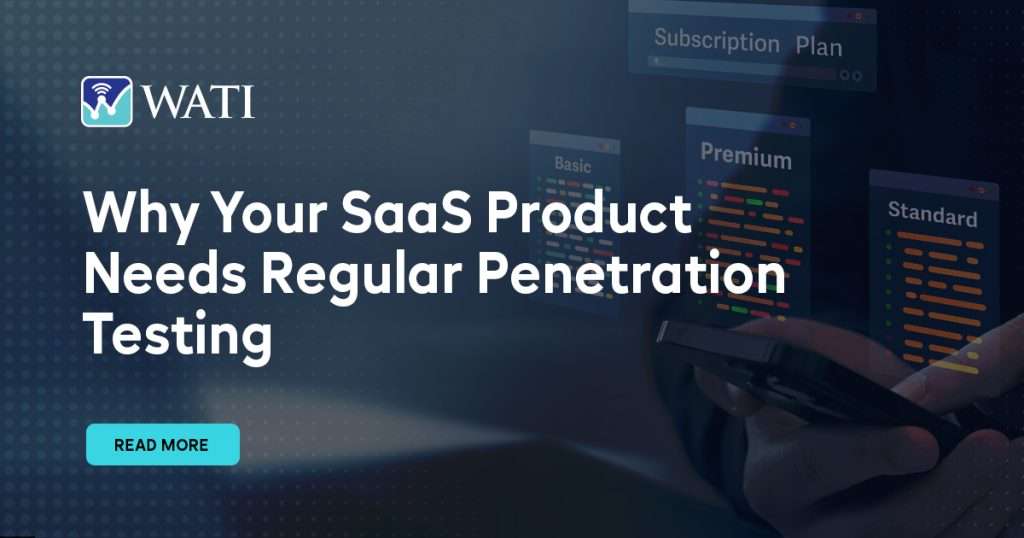Cloud adoption has transformed the way organizations build, deploy, and scale applications. Amazon Web Services (AWS), Microsoft Azure, and Google Cloud Platform (GCP) collectively host the workloads of millions of businesses. However, this shift to the cloud has also expanded the attack surface — making security a top priority.
Red teaming, a simulated adversarial approach to security testing, has become an essential part of cloud defense strategies. It goes beyond traditional vulnerability scans and penetration testing by mimicking real-world attacks to uncover weaknesses before malicious actors exploit them.
In this article, we’ll explore how red teaming applies to cloud infrastructure, the unique security challenges of AWS, Azure, and GCP, and best practices for organizations to strengthen their cloud security posture.
What is Red Teaming in Cloud Infrastructure?
Red teaming is a goal-based, adversary simulation exercise designed to test the effectiveness of an organization’s defenses, detection capabilities, and incident response procedures. In the cloud, it means adopting the mindset of a malicious attacker to identify misconfigurations, privilege escalation paths, insecure APIs, and weak identity management practices.
Unlike traditional penetration testing, cloud red teaming often:
- Targets real production environments (with caution and approval)
- Involves multi-vector attacks (network, application, IAM, and supply chain)
- Tests detection and response capabilities, not just prevention
- Simulates cloud-specific attack tactics like exploiting serverless misconfigurations, abusing IAM roles, or compromising storage buckets
Why Cloud Red Teaming is Crucial
Cloud platforms operate under a shared responsibility model, meaning the provider secures the infrastructure, while the customer must secure their data, configurations, and identity systems.
Misunderstandings of this model, combined with complex multi-cloud deployments, make organizations vulnerable.
Key benefits of cloud red teaming include:
- Detecting misconfigurations and privilege escalation opportunities
- Identifying gaps in incident detection and response
- Strengthening identity and access management policies
- Validating security controls across AWS, Azure, and GCP
- Reducing the likelihood of costly breaches and compliance violations
AWS Red Teaming Challenges
AWS is the largest cloud provider, with a vast ecosystem of services — from EC2 and S3 to Lambda and Kubernetes. This scale comes with unique red teaming challenges:
1.Complex IAM Role Structures
AWS IAM policies can be intricate, and over-permissive roles often go unnoticed. Attackers can exploit:
- Misconfigured trust relationships
- Overbroad “*” permissions
- Lack of MFA on privileged accounts
Red Team Tip: Test for privilege escalation via misconfigured roles and temporary credential abuse.
2.S3 Bucket Misconfigurations
Publicly accessible or overly permissive S3 buckets remain a common issue. A single exposed bucket can lead to data breaches.
Red Team Tip: Attempt simulated data exfiltration to test detection and monitoring.
3.Serverless Security Gaps
AWS Lambda functions may run with excessive privileges or contain insecure code.
Red Team Tip: Deploy code injection tests to assess function isolation and IAM role usage.
4.CloudTrail Evasion
While AWS CloudTrail logs most activities, attackers may attempt to disable or bypass logging.
Red Team Tip: Simulate log tampering attempts and verify if alerts are triggered.
Azure Red Teaming Challenges
Microsoft Azure integrates closely with Microsoft 365 and Active Directory, creating unique identity-related attack vectors.
1.Azure Active Directory (AAD) Abuse
AAD misconfigurations can lead to tenant-wide compromise. Common attack methods include:
- Password spraying against AAD accounts
- Abuse of legacy authentication protocols
- Misuse of application consent grants
Red Team Tip: Test detection capabilities for brute-force and consent phishing attacks.
2.Role-Based Access Control (RBAC) Misuse
Overprivileged roles in Azure can give attackers control over entire subscriptions.
Red Team Tip: Identify privilege escalation paths via custom role definitions and inherited permissions.
3.Storage Account Exposure
Azure Blob storage, if misconfigured, can be accessed without authentication.
Red Team Tip: Attempt enumeration and retrieval of sensitive files.
4.Hybrid Environment Risks
Many Azure deployments are hybrid (on-prem + cloud), increasing attack complexity.
Red Team Tip: Simulate lateral movement from on-prem environments into the Azure cloud.
GCP Red Teaming Challenges
GCP is known for its developer-friendly environment and deep integration with Kubernetes, but it has its own red team hurdles.
1.Service Account Key Mismanagement
Service accounts in GCP often have long-lived keys that, if leaked, grant wide access.
Red Team Tip: Test for key exposure in code repositories and CI/CD pipelines.
2.Over-Permissioned IAM Roles
Just like AWS and Azure, excessive permissions are a problem in GCP. Attackers exploit overly broad roles to escalate privileges.
Red Team Tip: Look for “primitive roles” (Owner, Editor, Viewer) in production workloads.
3.Cloud Storage Bucket Risks
Publicly accessible GCP buckets can leak sensitive data.
Red Team Tip: Perform controlled object enumeration and assess alerting mechanisms.
4.Kubernetes Engine (GKE) Exploits
GKE clusters, if misconfigured, may allow attackers to escape containers or access secrets.
Red Team Tip: Simulate pod compromise and lateral movement to other services.
Multi-Cloud Red Teaming: Added Complexity
Many enterprises use more than one cloud provider — either for redundancy, vendor diversity, or specialized workloads. Multi-cloud environments introduce:
- Inconsistent security controls across platforms
- Multiple IAM systems to manage
- Complex logging and monitoring integration
- Cross-cloud lateral movement risks
Red teamers in multi-cloud setups must:
- Understand the nuances of each platform
- Simulate attacks that move between AWS, Azure, and GCP
- Ensure incident response teams can correlate and respond across clouds
Best Practices for Cloud Red Teaming
1.Define Clear Objectives
- Align red team goals with business risk, not just technical curiosity.
2.Get Proper Authorization
- Ensure tests are approved and documented to avoid service disruptions.
3.Leverage Cloud-Native Tools
- Use services like AWS Security Hub, Azure Security Center, and GCP Security Command Center during exercises.
4.Simulate Realistic Threat Scenarios
- Model attacks based on the organization’s threat profile and industry trends.
5.Test Identity Security First
- IAM is the crown jewel in cloud environments; prioritize testing for privilege escalation.
6.Integrate Detection & Response Validation
- Measure SOC and IR team performance during simulated incidents.
7.Report with Actionable Recommendations
- Deliver findings that prioritize remediation efforts by risk level.
Conclusion
Red teaming for cloud infrastructure is no longer optional — it’s a necessity for modern security operations. AWS, Azure, and GCP each have distinct architectures and risks that require specialized adversary simulation. By proactively identifying misconfigurations, privilege escalation paths, and detection gaps, organizations can dramatically reduce the risk of costly breaches.
As cloud adoption continues to grow, so will the sophistication of threats. Investing in cloud-focused red teaming ensures your defenses are tested against real-world attack methods — before attackers have a chance to exploit them.
Frequently Asked Questions (FAQs)
Cloud red teaming is an adversarial simulation that mimics real-world cyberattacks against cloud infrastructure like AWS, Azure, or GCP. Unlike traditional penetration testing, which focuses on finding technical vulnerabilities, cloud red teaming evaluates the entire security posture — including detection, response, and organizational readiness.
Cloud environments have unique configurations, identity systems, and attack vectors. Cloud red teaming helps organizations uncover misconfigurations, privilege escalation opportunities, and identity weaknesses that automated tools often miss. It ensures defenses are tested in realistic scenarios, reducing breach risk.
- Identifies hidden misconfigurations and excessive permissions
- Tests the effectiveness of incident detection and response
- Validates identity and access management (IAM) controls
- Simulates advanced, cloud-specific attack techniques
- Improves compliance readiness for regulations like ISO, SOC 2, HIPAA, and GDPR
AWS red teaming often involves tackling complex IAM role structures, detecting S3 bucket misconfigurations, securing serverless functions, and ensuring CloudTrail logging can’t be bypassed.
The top Azure red teaming challenges include Azure AD abuse, overprivileged RBAC roles, exposed storage accounts, and hybrid environment attack paths from on-premises networks.
GCP red teaming frequently focuses on service account key management, over-permissioned IAM roles, public cloud storage buckets, and Kubernetes Engine (GKE) misconfigurations, all of which have unique exploitation methods.
They should define clear objectives, get internal approvals, identify sensitive data assets, ensure monitoring systems are functioning, and communicate with all relevant stakeholders to minimize disruptions.
For dynamic cloud environments, at least once or twice a year is recommended, or whenever there’s a significant infrastructure change — such as adopting multi-cloud strategies, enabling new services, or undergoing mergers and acquisitions.
Look for providers with:
- Proven experience in AWS, Azure, and GCP environments
- Certified cloud security experts (e.g., AWS Certified Security, Azure Security Engineer Associate, GCP Professional Cloud Security Engineer)
- A track record of delivering actionable, risk-prioritized reports
- Ability to conduct stealthy, realistic simulations without business disruption
The return on investment comes from preventing breaches that could cost millions in downtime, fines, and reputational damage. Cloud red teaming strengthens defenses, improves compliance, and enhances the organization’s ability to detect and respond to threats faster — all of which directly impact long-term business resilience.



